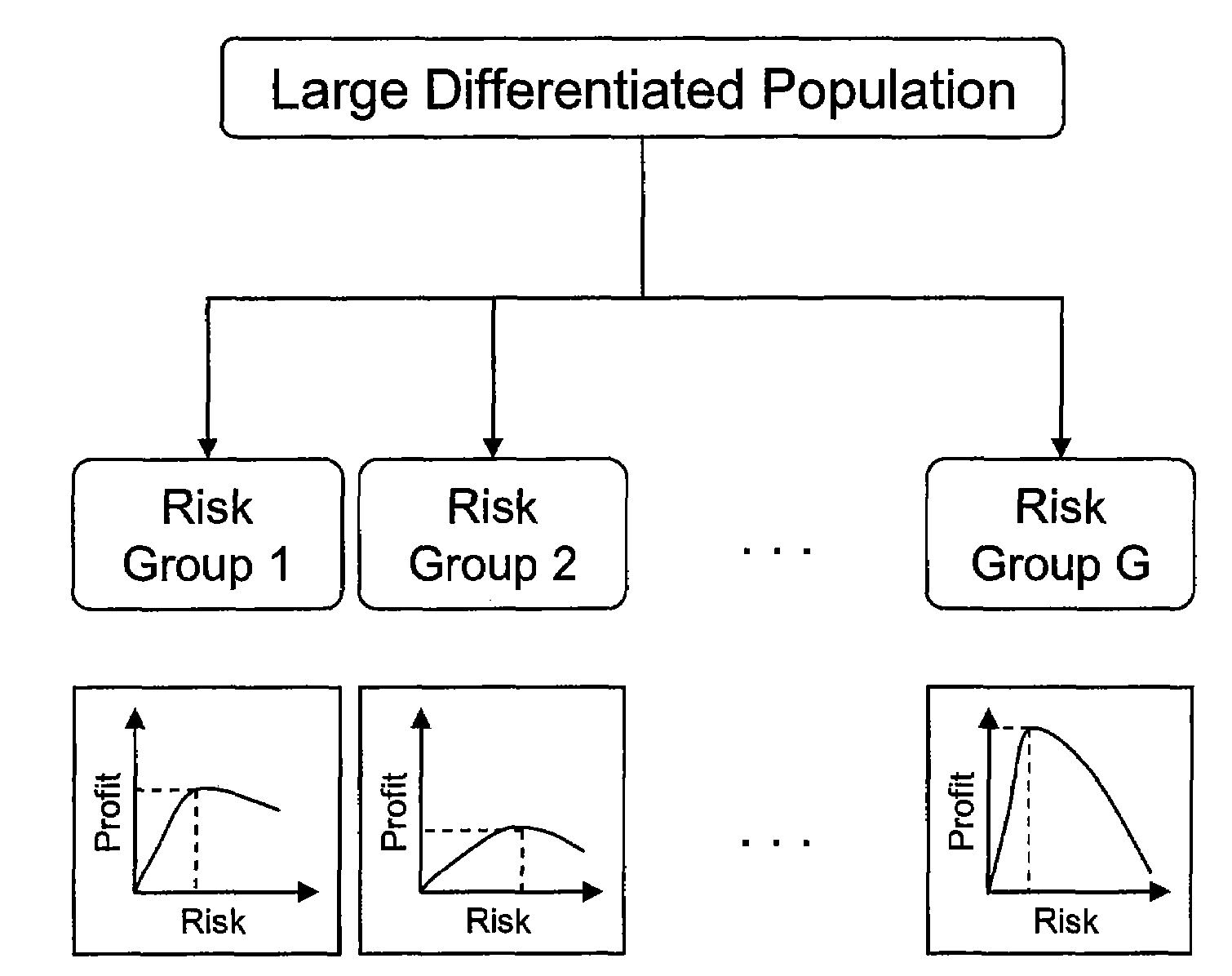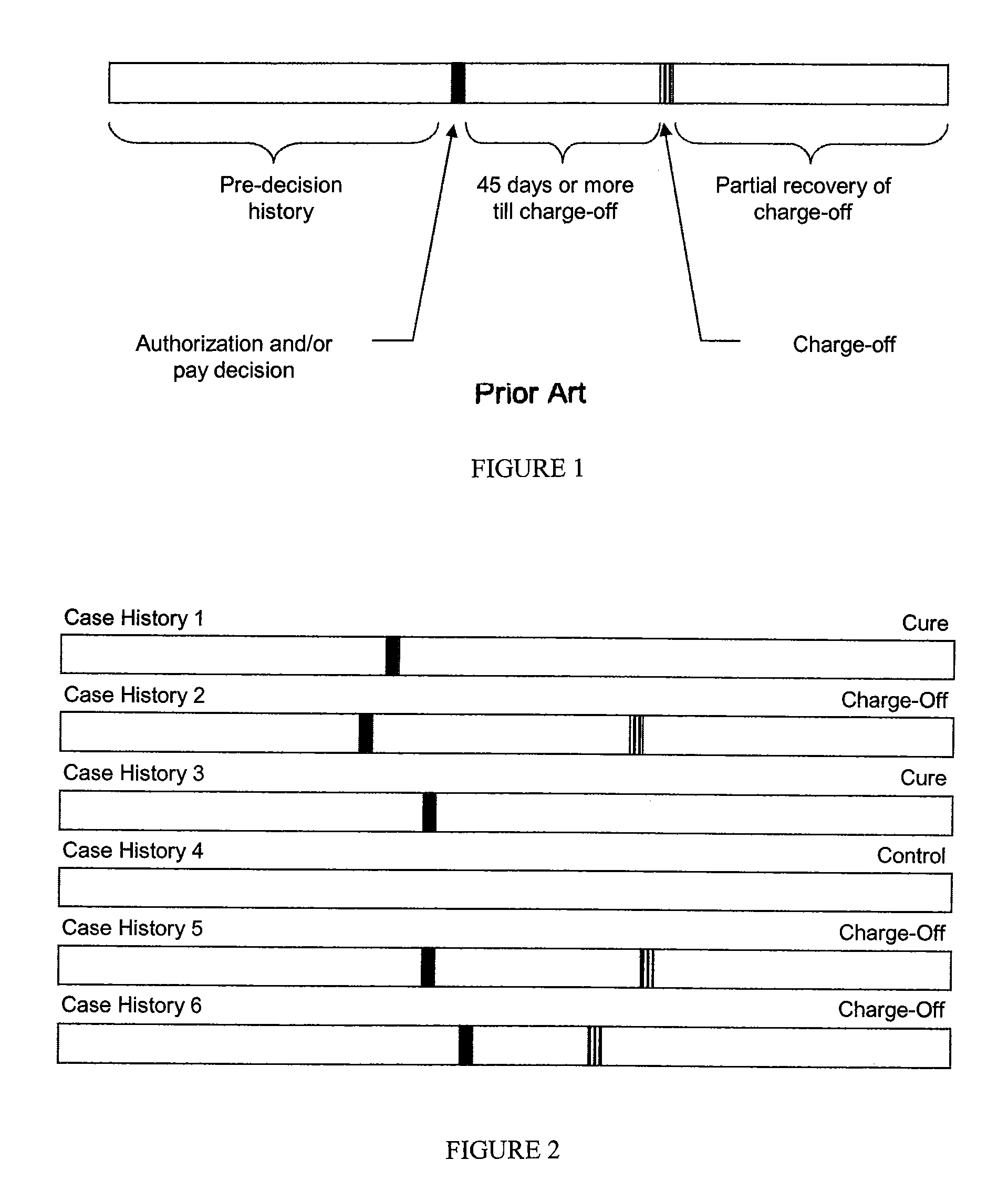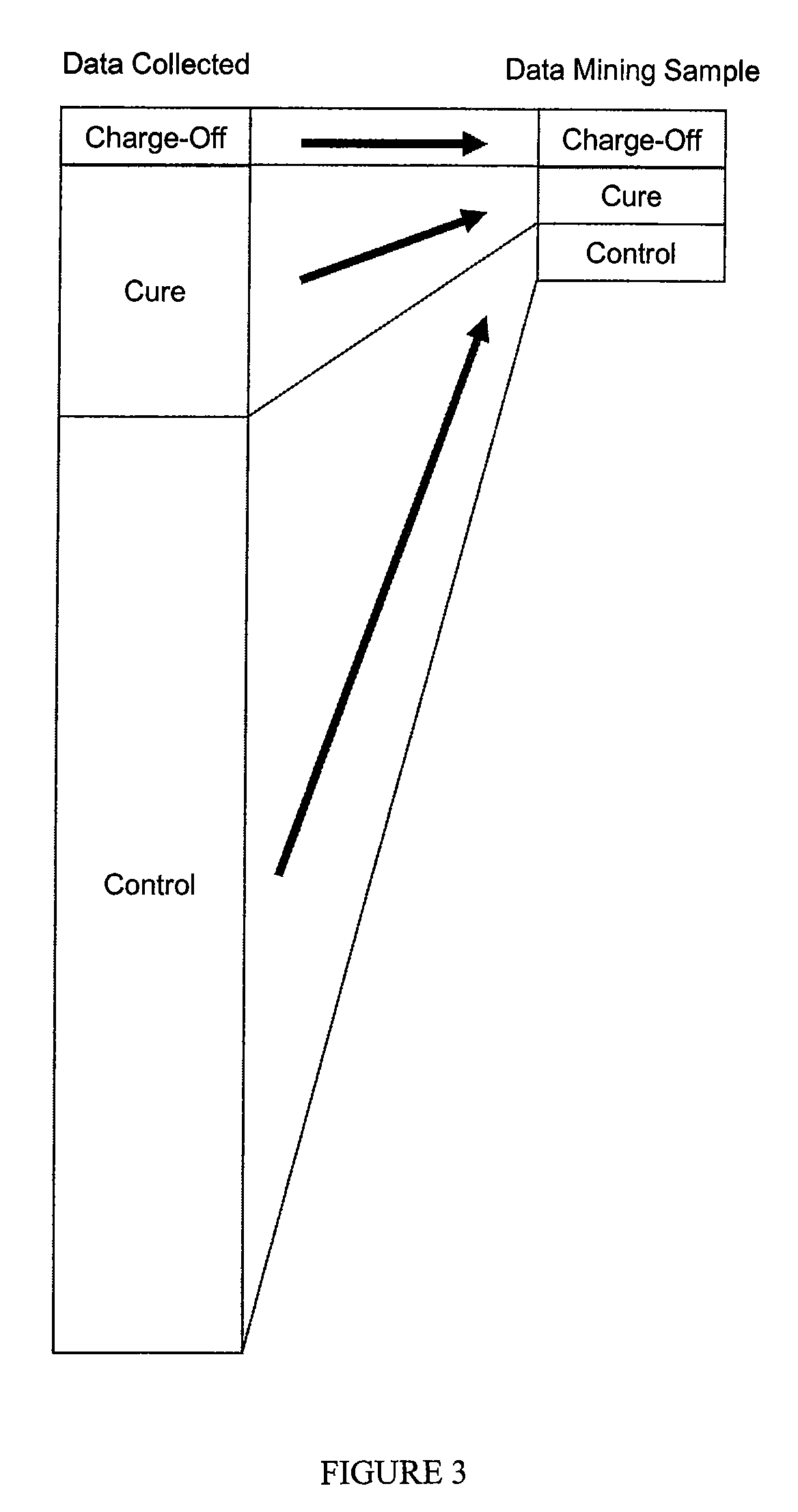Method for minimizing overdraft charge-off
a charge-off and overdraft technology, applied in the field of banking transactions, can solve the problems of inability to accurately predict the effect of the charge-off, inability to reduce the charge-off, and inability to accurately predict the charge-off, etc., and achieve the effect of minimizing the charge-o
- Summary
- Abstract
- Description
- Claims
- Application Information
AI Technical Summary
Benefits of technology
Problems solved by technology
Method used
Image
Examples
Embodiment Construction
Categories of Risk Predicting Factors
[0035]The present invention examines six categories of characteristics in order to ascertain the probability that a given account will charge-off. Balance's, Transactions, Exceptions, Account Information, Customer Information, and Relationship Information. Within each category, are identified various “conceptual telltales.” As used herein, a conceptual telltale is a particular characteristic of the pre-decision case history of an account, hypothesized to have value in predicting charge-off risk.
[0036]For any given conceptual telltale, there will be numerous ways the telltale can be represented as either a number or as categorical information. As an example, consider the account category conceptual telltale “age of the account at the time the overdraft decision is to be made” (or “age of account” for short). One could represent this as a number in days, in (30-day) months, as the logarithm of the number days old or in many other ways. One could al...
PUM
 Login to View More
Login to View More Abstract
Description
Claims
Application Information
 Login to View More
Login to View More - R&D
- Intellectual Property
- Life Sciences
- Materials
- Tech Scout
- Unparalleled Data Quality
- Higher Quality Content
- 60% Fewer Hallucinations
Browse by: Latest US Patents, China's latest patents, Technical Efficacy Thesaurus, Application Domain, Technology Topic, Popular Technical Reports.
© 2025 PatSnap. All rights reserved.Legal|Privacy policy|Modern Slavery Act Transparency Statement|Sitemap|About US| Contact US: help@patsnap.com



